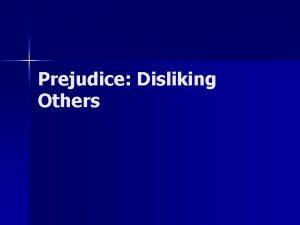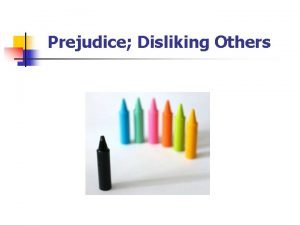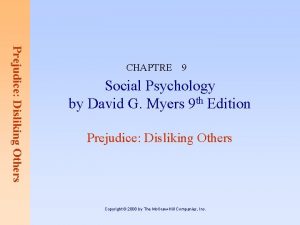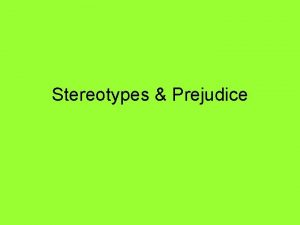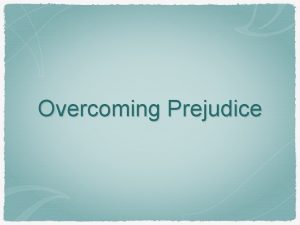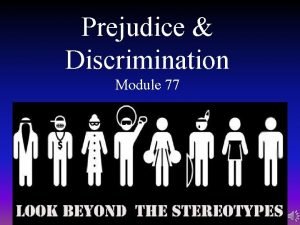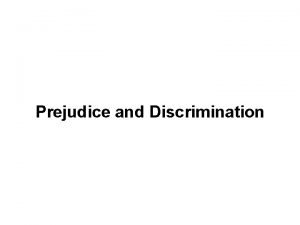Prejudice Disliking Others The Nature Power of Prejudice









- Slides: 9

Prejudice: Disliking Others

The Nature & Power of Prejudice n What is prejudice? – A negative prejudgment of a group & its individual members. n An n attitude Role of Stereotypes – Negative beliefs about the personal attributes of a group of people n Often overgeneralized, inaccuarte, & resistant to new information.

The Nature & Power of Prejudice n Discrimination is negative behavior. n Racism: prejudicial attitudes & discriminatory behavior toward people of a given race. Sexism: prejudicial attitudes & discriminatory behavior toward people of a given sex. n – Unjustifiable negative behavior toward a group or its members.

The Nature & Power of Prejudice n How pervasive is prejudice? – Racial prejudice: shift from blatant to subtle or “modern/cultural” racism. – Gender prejudice: n Gender stereotypes shown to be much stronger than racial stereotypes. n Blatant gender prejudice is being replaced by subtle

Social Sources of Prejudice n Social inequalities – Unequal status: social classes – Social dominance orientation n Socialization: acquired values & attitudes – – Authoritarian personality: ethnocentric Religion: sustained by divine support Conformity, path of least resistance Institutional Supports: schools, government, media

Motivational Sources of Prejudice n Frustration & aggression: scapegoat theory (displaced aggression) – Realistic Group Conflict theory n Social Identity Theory: feeling superior to others – – n We categorize We identify (ingoups) We compare (outgroups) Need for status, self-regard, and belonging Motivation to avoid prejudice

Cognitive Sources of Prejudice n Categorization – Perceived similarities & differences used to organize our world n Spontaneous categorization: – – – Short on time Preoccupied Tired Emotionally aroused To young to appreciate diversity

Cognitive Sources of Prejudice n Distinctiveness: perceiving people who stand out – – – n Distinctive people Vivid cases: athletes, population Distinctive events Fundamental Attribution Error: – Group-serving bias – Just-world phenomenon: people get what they deserve

The Consequences of Prejudice n Cognitive consequences of stereotypes – Are stereotypes self-perpetuating? – Discrimination’s impact: The self-fulfilling prophecy – Stereotype threat – Do stereotypes bias judgments of individuals?
